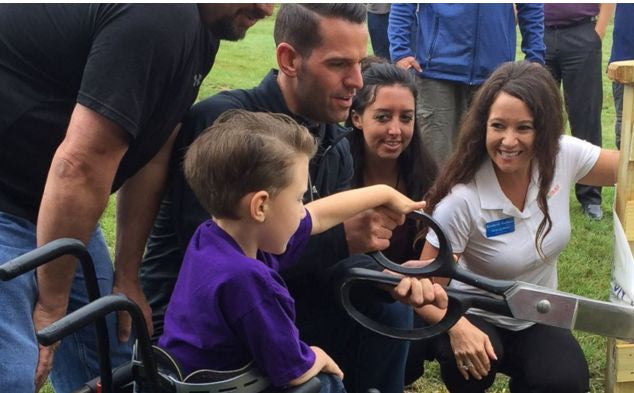7-Year-Old Gets Dream Wheelchair-Accessible Tree House
Hayden Trigg’s reliance on a wheelchair and diagnoses of both spina bifida and cerebral palsymeant the 7-year-old had trouble playing alongside his classmates and two siblings.
But that changed earlier this month when Hayden, of Austin, Texas, cut the ribbon on the wheelchair-accessible tree house of his dreams. The tree house was constructed in his family’s backyard thanks to the Make-A-Wish Foundation and the generosity of a local contractor, Austin Tree Houses, etc
“It’s leveled the playing field for him,” Hayden’s mom, Adrienne Trigg, told ABC News of the tree house that was built between 200-year-old oak trees on the family’s one-acre property. “He goes outside but cannot play, but that will change this summer.”
Hayden, who has been in a wheelchair his entire life, watched dutifully as the tree house was built in his backyard, with contractors working through the rainy Texas weather to finish it on time.

When the final nail was nailed, Hayden’s entire first-grade class rode the school bus to his home to join him in playing for the first time in the tree house.
“It was the best day of his life,” Trigg said. “His wish was to share it with his friends. He’s got to be the most popular kid in school right now.”
Hayden has since been completing his physical therapy treatments in his new tree house instead of the family’s home, according to Trigg. He is also using the tree house’s 65-foot-long wheelchair ramp to break new barriers for himself.
“He has very low muscle tone, so it’s hard for him to go long distances in his manual chair,” Trigg said. “For the very first time, he took the manual chair up and down the ramp because he was so excited.”
She added, “That’s really thrilling to us. We’ve already done a slumber party in the tree house and have scheduled parties this summer.”


